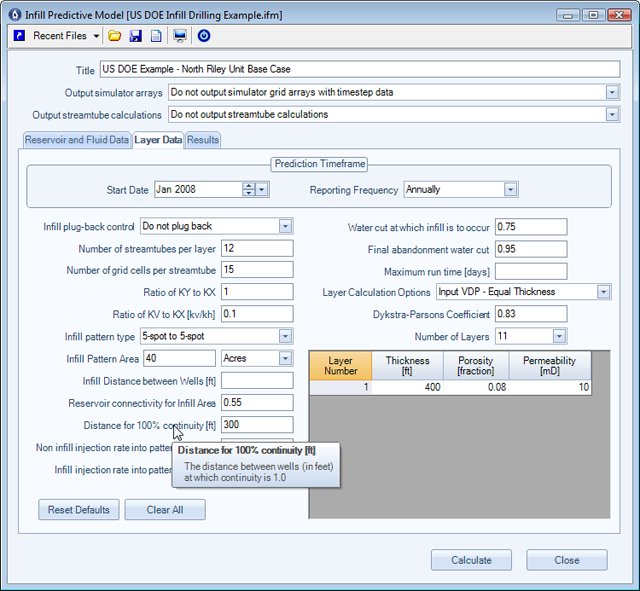EORgui Product Details
EORgui is a Graphical User Interface for the United States of America, Department of Energy, National Energy Technology Laboratory, Publically Available EOR Software
Through the use of this application, the user can quickly screen oil fields and quantify incremental production for potentially applicable EOR techniques.
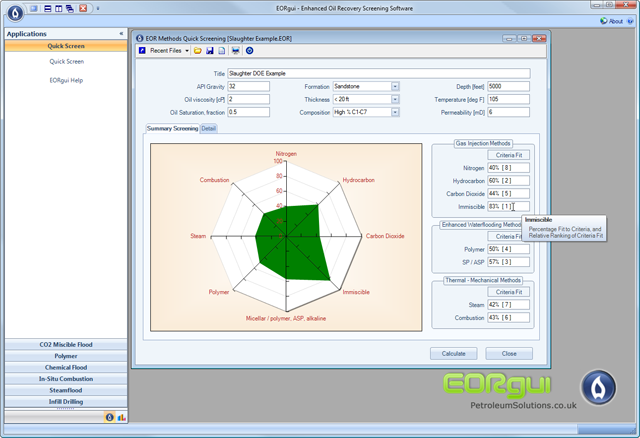
This graphical user interface (GUI) application :
- Quickly screen and rank appropriate EOR methods for a given set of summary reservoir and fluid properties.
- Prepares the input files required for the technical analysis portions of the publically available fortran applications. Namely, the GUI does not prepare the input required to calculate the economic analysis that is also available within these publically available software.
- The GUI runs the fortran applications and imports the results back into the application.
- The results are input into convienient data tables for export into other applications (eg. Microsoft Excel), and also plotted in high output quality charts for use with other applications (eg. Microsoft Powerpoint).
EOR Methods Quick Screening
This routine is based on the 1996 Society of Petroleum Engineers Paper entitled "EOR Screening Criteria Revisited" by Taber, Martin, and Seright. Contained within this paper are concise screening guidelines for various EOR techniques.
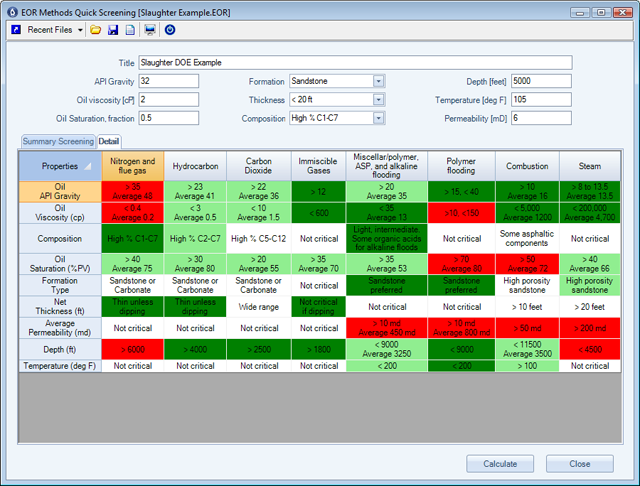
CO2 Miscible Flooding Predictive Model
The CO2 flooding process consists of injecting large quantities of CO2 into the reservoir. CO2 extracts the light to intermediate components from the oil, and if the pressure is high enough develops miscibility to displace the oil from the reservoir. CO2 recovers oil by swelling the crude oil, lowering the viscosity of the oil and lowering the interfacial tension between the oil and the CO2 phase in the near miscuble region.
The following description is taken from the US Department of Energy CO2 Predictive Model documentation.
The CO2 Predicitive Model is a three-dimensional (layered, five-spot), two-phase (aqueous and oleic), three component (oil, water, and C02) model. It computes oil and C02 breakthrough and recovery from fractional theory modified for the effects of viscous fingering, areal sweep, vertical heterogeneity and gravity segregation.
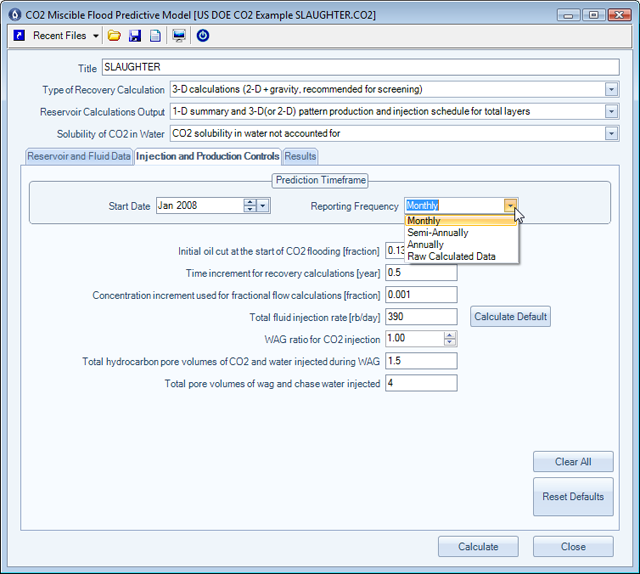
Chemical Flood Predictive Model
All chemical flooding methods recover oil by lowering the interfacial tension between the oil and water, solubization of oil in some micellar systems and mobility enhancement.
The Chemical Flood Predictive Model (CFPM) models micellar (surfactant)-polymer (MP) floods in reservoirs which have been previously waterflooded to residual oil saturation. Thus, only true tertiary floods are considered. An option is available in the model which allows a rough estimate of oil recovery by caustic (alkaline) or caustic-polymer processes. The CFPM uses theory and the results of numerical simulation to predict MP oil recovery in five-spot patterns. Oil-bank and surfactant breakthrough and project life are determined from fractional flow theory. A Koval-type factor, based on the Dykstra-Parsons (1950) coefficient, is used to account for the effects of reservoir heterogeneity on surfactant and oil bank velocities.
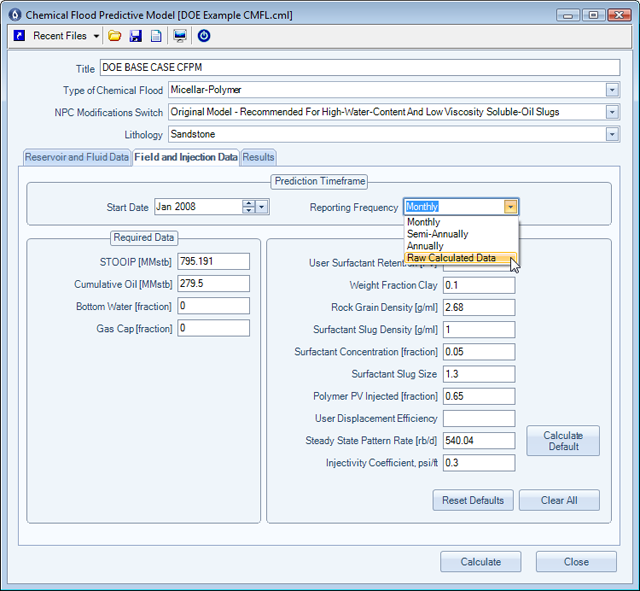
In-situ Combustion Predictive Model
In-situ combustion involves starting a fire in the reservoir and injecting air to sustain the burning of some of the crude oil. This process recovers oil by the application of heat to lower the oil viscosity, upgrading the crude through thermal cracking, and the pressure supplied to the reservoir by the injected air.
Polymer Predictive Model
The intent with polymer flooding is to provide better displacement and volumetric sweep efficiencies during a waterflood. This process improves recovery by increasing the viscosity of water, decreasing the mobility of water and contacting a larger volume of the reservoir.
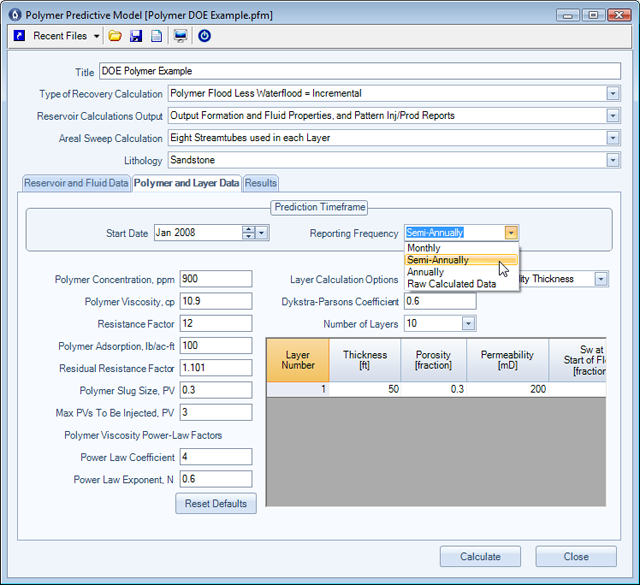
Steamflood Predictive Model
The steamdrive process or steamflooding involves the continuous injection of steam to displace oil towards the producing wells. This process recovers oil by heating the oil and reducing it's viscosity, supplying pressure to drive oil to the producing wells and steam distillation, especially in light crude oils.
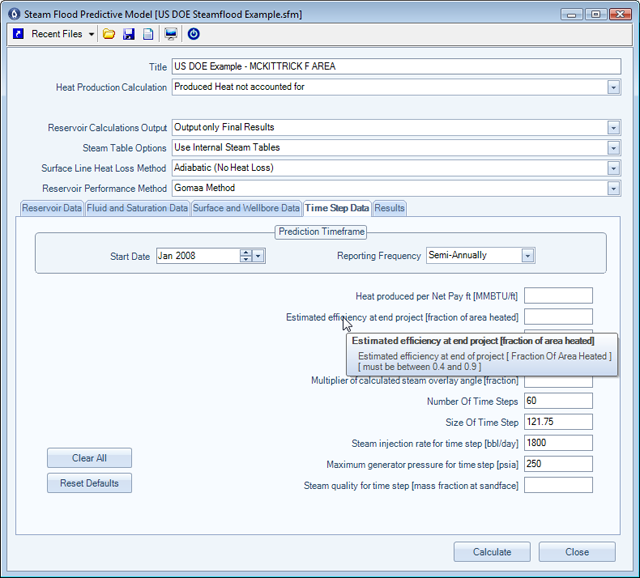
Infill Drilling Predictive Model
The following description is taken from the US Department of Energy Infill Drilling Predicitive Model documentation.
The IDPM is a three-dimensional (stratified, five-spot), two-phase (oil and water) model which uses a minimal amount of reservoir and geologic data to generate production and recovery forecasts for ongoing waterflood and infill drilling projects. The model computes water-oil displacement and oil recovery using finite difference solutions within streamtubes. It calculates the streamtube geometries and uses a two-dimensional reservoir simulation to track fluid movement in each streamtube slice.
